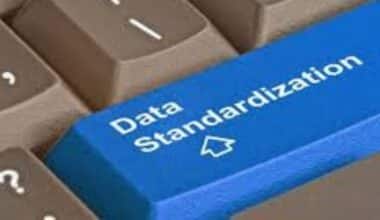Digital assets are a popular asset class for investors who want to profit from the trend because they are the way of the future. Digital assets offer an opportunity to invest early in a technology that will probably be utilized more and more, although they might be volatile. We’ll discuss what digital assets are in this article and how to get started with the investment. We will also see the roles and qualities of an excellent digital assets manager for effective management.
What are Digital Assets?
Digital assets are uniquely recognized, kept digitally, and used by companies to realize value. Documents, music, video, logos, slide shows, spreadsheets, and websites are a few digital assets.
The term “digital assets” refers to a wide variety of things, including, but not limited to, images, videos, and documents. For instance, a photograph you snap and store on your phone or computer would be considered a digital asset. You have usage rights as the photographer. Therefore, you can sell it or publish it on your website because it is preserved in a digital format.
How Digital Assets Work
Although the general idea of digital assets is clear enough, many different types of assets can be classified as such, and the ones considered investments typically have more intricate structures. To understand them better, we’ll examine the two most prevalent types of digital assets, cryptocurrencies and NFTs.
A cryptocurrency is a type of digital money that operates on a decentralized network and employs cryptography. Transactions are verified and recorded by a network of devices. Because no single organization is in charge of the network, cryptocurrencies can be decentralized.
Blockchain technology enables decentralized digital assets like cryptocurrencies and NFTs to function without a central authority. A blockchain is a shared ledger that keeps track of bitcoin transactions. Each block of transactions contains a set of transactions after the transactions are sorted into blocks. Any computer running the blockchain’s software contributes to the chain’s validation and addition of transaction blocks.
Smart contracts are one of blockchain technology’s most flexible features since they allow it to do much more than just record transactions. A blockchain-based program that automatically executes when specific criteria are met is known as a “smart contract.” While smart contracts have many uses, NFTs are the ones that matter in this instance.
Cases of Digital Assets
After examining what digital assets are and their various classifications, let’s look at some concrete instances of well-known digital assets:
#1. Cryptocurrency
The original cryptocurrency is Bitcoin (CRYPTO: BTC). An unidentified entrepreneur developed it in 2009 as a decentralized electronic payment system.
The first blockchain network with support for smart contracts was Ethereum. It grew to be the second-largest cryptocurrency in the world.
#2. Stablecoin
Stable called USD Coin (CRYPTO: USDC) aims to keep its value at $1. People who wish to maintain their investments in cryptocurrencies yet stay away from volatility use them. Stablecoins don’t have the same safeguards as the U.S. dollar, though some have collapsed.
One of the earliest popular NFT collections was CryptoPunks. 10,000 distinct digital avatars are included in the CryptoPunks collection, produced in 2017 by a two-person business.
#3. Decentraland (CRYPTO: MANA)
Decentraland is a pioneering example of the Metaverse, a virtual environment where users can engage in activities and purchase virtual property built on the Ethereum blockchain.
Digital Assets Management
The media-rich heart of your brand is brought into harmony through a digital asset management (DAM) solution. All digital content may be stored, shared, and organized using DAM technologies in a safe, centralized location. By ensuring that your team can locate, share, and optimize your digital assets in real time, you can get more use out of your creative files, such as photographs, videos, and other material.
Why is Digital Assets Management Important?
Organization and control over each digital file in a company’s media ecosystem are essential components of effective digital assets management. Your digital asset library will expand with your business and content requirements. Everyone may relate to taking too long to find a particular file. Majority of businesses lack;
#1. A DAM Solution
This is the most typical problem with digital asset management and solutions
Your bottom line will suffer if you don’t manage your digital assets. Check out typical DAM issues and how companies resolve them with straightforward solutions.
#2. Accessibility to Assets
Digital assets are rarely handled effectively without a DAM. It’s likely that the wrong individuals are utilizing the incorrect resources at the incorrect time. Take back control with a centralized system that creates workflows, controls access, and speeds up the approval procedure, so the appropriate files reach the appropriate people.
#3. Good Time and Money Management
If your team is wasting time looking for mislabeled or missing assets, that is time that should be spent expanding and scaling your company. Give them access to a centralized platform that simplifies the management, organization, and upkeep of all the assets in your ecosystem.
#4. Good Workflow
With a unified platform created to encourage collaboration and sharing, you can eliminate silos and improve communications throughout your organization. Teams can democratize assets, develop agile workflows, and enhance consistency across all channels with the help of digital asset management solutions.
#5. Proper Assembling Team and Resources
Software for digital asset management empowers teams and acts as a central repository for all brand assets. While allowing teams to store, arrange, share, search, and expand their digital library, it enhances information security.
Beyond upholding brand standards and increasing storage capacity, a DAM solution performs other functions. Your staff can now concentrate on what matters.
(Hint: It isn’t spending an hour looking for a document with the wrong label.)
Digital Assets Manager
The administration of digital assets can quickly become a daunting undertaking as your business expands. Consider adding a digital asset manager to your team to lessen this strain. This section explains the functions of a Digital Asset Management (DAM) system, how your firm might use them, and how Cloudinary contributes to the management of digital assets.
The Role of a Digital Assets Manager
Digital assets are files in binary format with access permissions. Assets include text files like blog posts, ebooks, and marketing copy and media files like audio, video, and image files. The acquisition, cataloging, management, and protection of an organization’s digital assets fall under the purview of digital asset managers. They frequently use a Digital Asset Management (DAM) system to carry out these activities. Digital asset managers frequently act as asset librarians and curators while managing the DAM system.
The Digital assets manager is responsible for the following:
- Effective naming, storing and maintaining the relevant files’ usage permissions.
- Controlling access to and usage of digital assets while maintaining copyrights, brand coherence, and compliance.
- Asset utilization optimization and promotion.
Digital asset managers are active in tool development, governance, research, advice, and enforcement. They gather all the company’s assets in one location, organizing and making media searchable so that different teams and asset providers can access it.
The most important duties of digital asset management are highlighted below.
#1. Have a Centralized Asset Database
Keep a library with precisely cataloged items that include information about usage permissions, current usage, and context.
#2. Continuity in Branding
Ensure that only authorized workers can modify access permissions and that relevant and current versions of digital marketing assets are easily searchable.
#3. Extremely productive
Create effective systems that make it simple to find and use digital materials. Publish accurate and concise usage and licensing information.
#4. Use Uniform Content
Applying timestamps, automating content expiration dates, limiting channel assets, and enforcing corporate-wide adherence to content development and distribution regulations will help you achieve uniformity of content usage.
#5. Timely and Accurate Reporting
The digital assets manager should regularly analyze and report on metrics related to audience engagement, usage patterns, and other aspects of digital assets’ lifecycle.
Qualities of the Digital Assets Manager
Managers of digital assets need to have a range of technical, analytical, and interpersonal skills.
#1. Technical Skill
Digital asset managers need to be proficient in the following in addition to being at ease working with metadata, taxonomies, digital rights, search facets, and web publishing procedures:
- Working knowledge of enterprise resource planning (ERP), product information management (PIM), ticketing systems, and content management systems (CMS).
- A practical understanding of programming languages and markup languages, including HTML and CSS, as well as resources for Windows, Linux, and macOS-based operating systems.
- Solid familiarity with vendors, integrators, resellers, and marketing stacks.
#2. Analytical Skill
Prioritizing tasks and assets is a skill that digital asset managers need to possess.
- Putting into place effective and efficient systems.
- Using a standardized process to apply relevant metadata tags to assets.
- Gathering and maintaining digital assets to ensure their usability and accessibility.
#3. Team Spirit
Digital asset managers must be able to:
- Work well as a teammate and a leader with clients and coworkers, some of whom are not computer aware.
- Clearly state the terms and conditions for accessing the company’s digital assets.
- Enforce adherence to the relevant rules with patience and compassion.
The digital asset manager may increase productivity and efficiency throughout the firm by automating organizational procedures with DAM solutions.
Digital Assets Investment
Wallets are used to Manage Decentralized Digital Assets. If you have cryptocurrency money or an NFT, you can access them via your wallet because these wallets provide private keys to assets stored on the blockchain.
There is a little more latitude with cryptocurrencies regarding how you manage them. You don’t need to transfer bitcoin to a wallet because most crypto apps and exchanges allow you to keep it on the platform after purchasing it. To ensure that you have complete control over your
Bitcoin, several crypto enthusiasts advise moving your money to your own blockchain wallet.
On the other side, NFTs require using NFT wallets for storage. The NFT that you purchase or mint on an NFT marketplace is kept in the wallet that you supply.
Many of the top NFT wallets are also blockchain wallets that can store cryptocurrency, even though this may all seem difficult. Therefore, you can store any cryptocurrency and NFTs you purchase in the exact location, even if you can have separate wallets.
It can be beneficial to pay attention when our award-winning analysis team has a stock tip. After all, the Motley Fool Stock Advisor newsletter, which they have been publishing for more than ten years, has nearly tripled the market.
The rise of crypto assets raises a lot of concerns for ordinary investors. If you’re thinking about investing in a crypto asset, you could wonder if it’s legal, if it’s the correct investment, or even if it’s a hoax. Those providing investments or services related to crypto assets might not act by the law.
How to Create Digital Assets
You may sell your goods or services using various digital assets. Let’s examine five main categories of digital assets and how each might advance your company.
#1. Videos
This includes how-to videos, product demonstrations, and promotional videos
An excellent option for expanding your business is video content. It works well as a sales tool since it is exciting and realistic. You can make your own videos or use pre-made ones that you may get online.
Select from various genres, including action, adventure, comedy, documentary, news, and reality. Start your video marketing campaign by making quick videos highlighting your company’s best attributes, including its staff, services, and goods. These videos are suitable for use on YouTube, social media, and your website.
#2. Audio Files
The includes sound effects, music, and podcasts.
I assume you’ve heard of podcasting. It’s also a great way to advertise your company. A computer, an MP3 player, and software like podcasting software can all be used to generate and produce podcasts, which are lightweight forms of digital media. Start your marketing effort by producing a few quick podcasts highlighting a distinct facet of your company.
Often, podcasts are ad-free, so you won’t hear any commercials while listening to them. No matter what your product or service is, people will be able to listen to it for free and enjoy the content just as much as if you paid for it, which is a significant benefit for current and new customers.
#3. Documents
This includes eBooks, white papers, and research reports
These are how-to instructions, business growth methods, and other reference tools. Choose from topics like business fundamentals, profitable business types, and more. They’re lovely for consumers and potential customers because the information is exciting and easy to utilize. You can also select free eBooks on various business-related topics, including marketing, customer service, accounting, and financing.
#4. Visuals
This includes photographs, graphics, and illustrations
Examining image-based materials is a fantastic way to increase your online visibility and draw in new clients. Photos, graphics, and illustrations are frequently social media-optimized, so they are simple to share and enjoy.
They’re a great technique to increase traffic to your page because they also have the added advantage of helping you rank better on Google.
Image-based assets on a computer or mobile device typically don’t load as rapidly as other types of material, which is a drawback. For instance, the photo can take a few seconds to load on the customer’s computer, but your online store should load quickly.
Conclusion
When expanding your firm, digital assets can be just as effective as physical ones. They give you more alternatives for promotion, more ways to connect with customers, and greater freedom in content creation. Digital assets can be managed with the help of various software solutions.
Related Articles
- DIGITAL ASSETS MANAGER: Job Description, Salary & Best Practices
- Asset Management: Examples, Systems & Salaries ( Updated!)
- What is a Crypto Wallet? Types & How to Use them
- Asset Management Software: Guide To The Best Asset Management Software
- DIGITAL ASSETS: Definition & How to Manage Them Effectively






